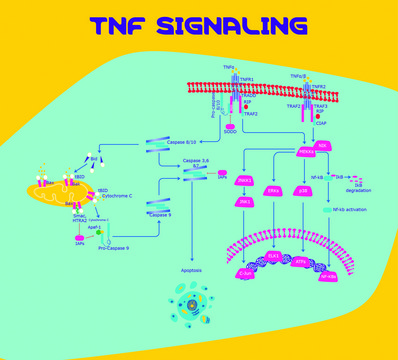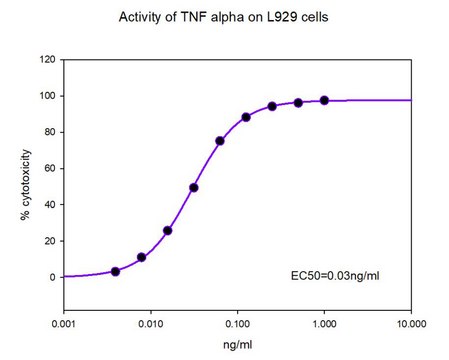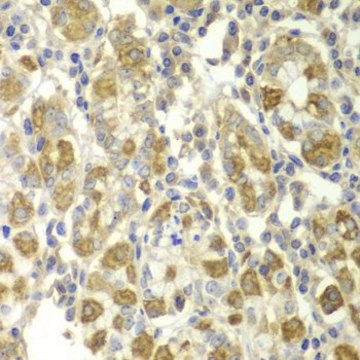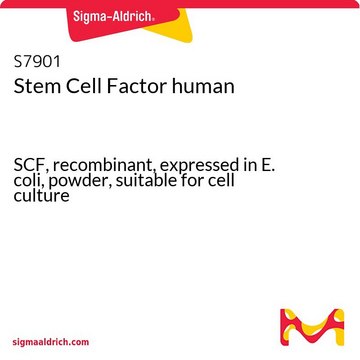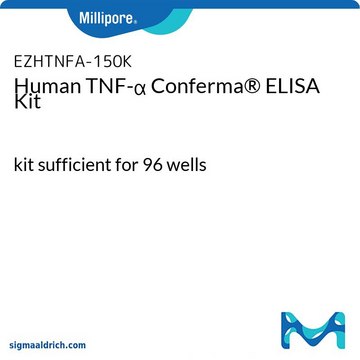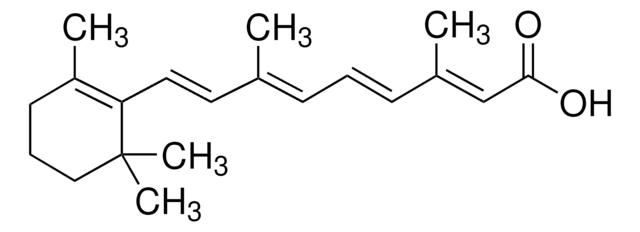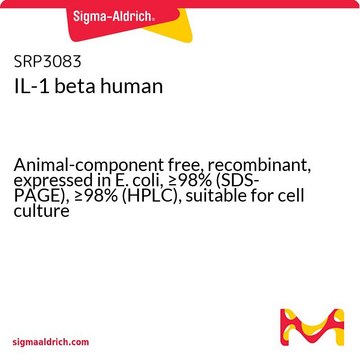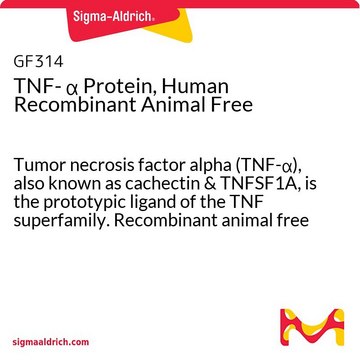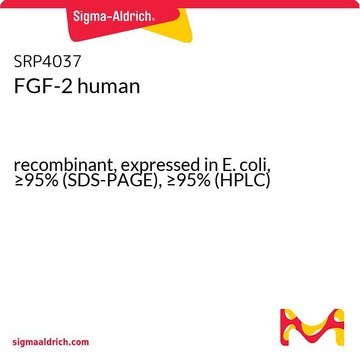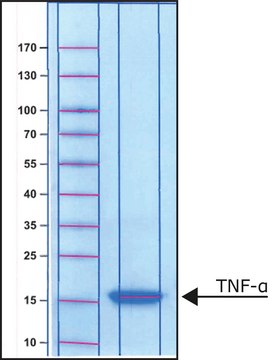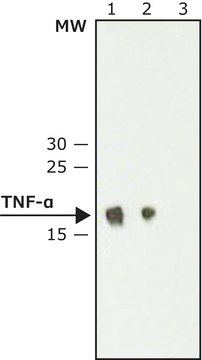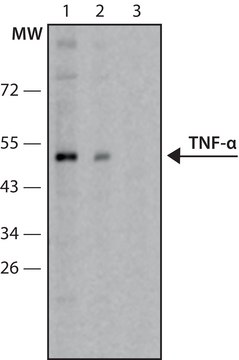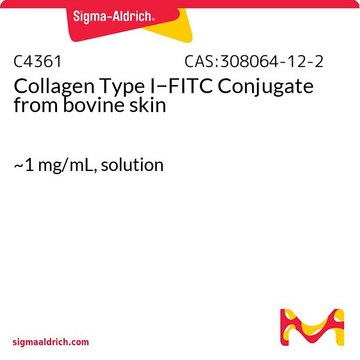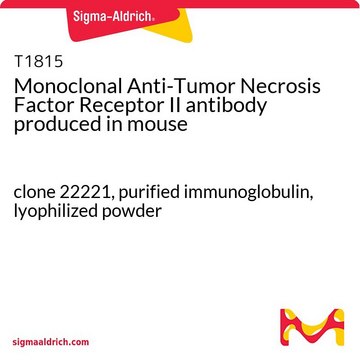Key Documents
Safety Information
T2824
Monoclonal Anti-Tumor Necrosis Factor-α antibody produced in hamster
~2 mg/mL, clone TN3-19.12, purified immunoglobulin, buffered aqueous solution
Synonym(s):
Anti-TNF-α
Select a Size
¥1,664.93
Select a Size
About This Item
¥1,664.93
Recommended Products
biological source
hamster
Quality Level
conjugate
unconjugated
antibody form
purified immunoglobulin
antibody product type
primary antibodies
clone
TN3-19.12, monoclonal
form
buffered aqueous solution
species reactivity
rat, mouse
packaging
antibody small pack of 25 μL
concentration
~2 mg/mL
1 of 4
This Item | T8300 | T1816 | T1815 |
|---|---|---|---|
| antibody form purified immunoglobulin | antibody form IgG fraction of antiserum | antibody form affinity isolated antibody | antibody form purified immunoglobulin |
| conjugate unconjugated | conjugate unconjugated | conjugate unconjugated | conjugate unconjugated |
| clone TN3-19.12, monoclonal | clone polyclonal | clone polyclonal | clone 22221, monoclonal |
| species reactivity rat, mouse | species reactivity human | species reactivity pig | species reactivity human |
| Gene Information mouse ... Tnf(21926) | Gene Information human ... TNF(7124) | Gene Information pig ... TNF(397086) | Gene Information human ... TNF(7124) |
General description
Specificity
Immunogen
Application
- immunoblotting
- enzyme-linked immunosorbent assay (ELISA)
- immunoprecipitation
- neutralization
Biochem/physiol Actions
Physical form
Disclaimer
Not finding the right product?
Try our Product Selector Tool.
Storage Class Code
10 - Combustible liquids
WGK
WGK 3
Flash Point(F)
Not applicable
Flash Point(C)
Not applicable
Regulatory Information
Choose from one of the most recent versions:
Already Own This Product?
Find documentation for the products that you have recently purchased in the Document Library.
Our team of scientists has experience in all areas of research including Life Science, Material Science, Chemical Synthesis, Chromatography, Analytical and many others.
Contact Technical Service